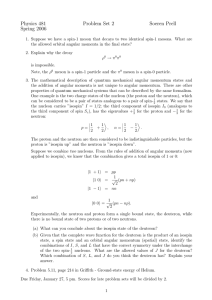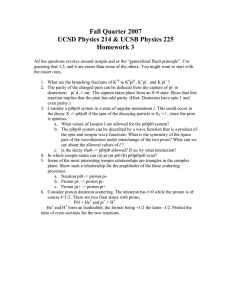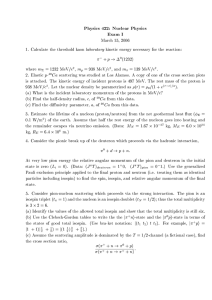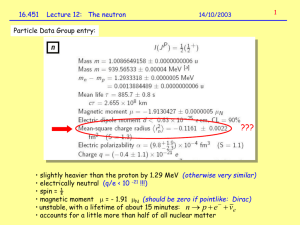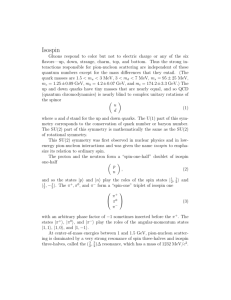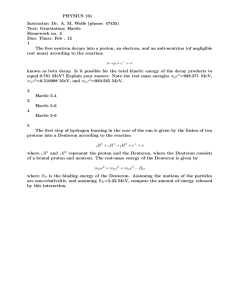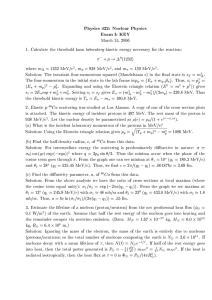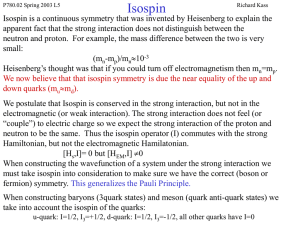Physics 481 Problem Set 2 Spring 2007
advertisement
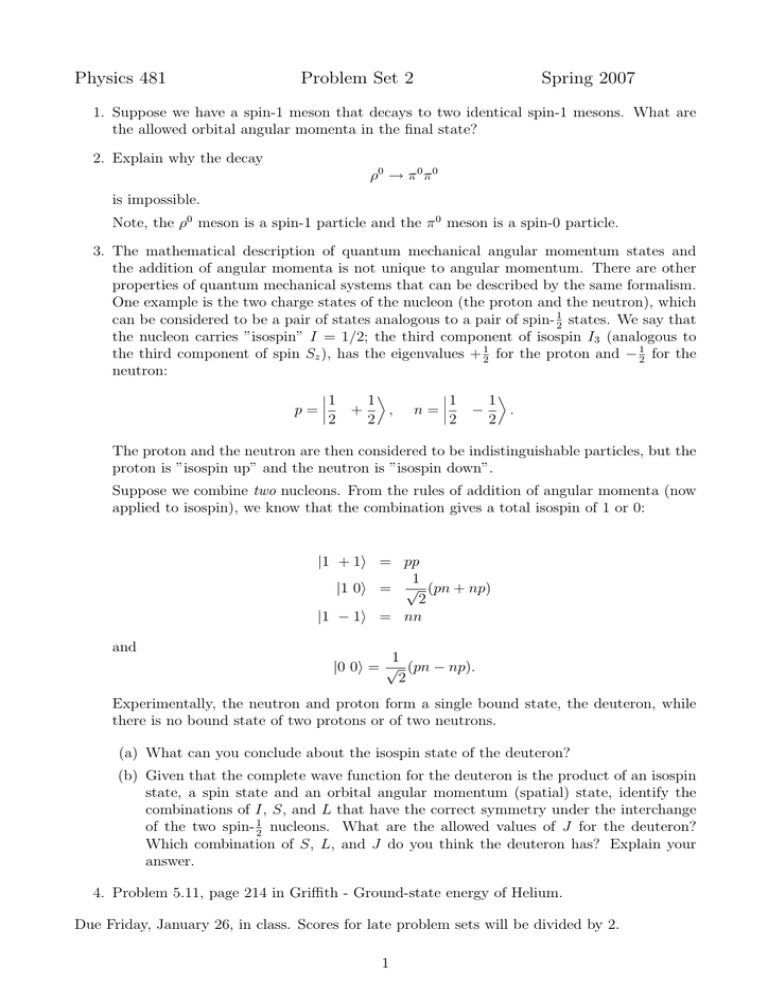
Physics 481 Problem Set 2 Spring 2007 1. Suppose we have a spin-1 meson that decays to two identical spin-1 mesons. What are the allowed orbital angular momenta in the final state? 2. Explain why the decay ρ0 → π 0 π 0 is impossible. Note, the ρ0 meson is a spin-1 particle and the π 0 meson is a spin-0 particle. 3. The mathematical description of quantum mechanical angular momentum states and the addition of angular momenta is not unique to angular momentum. There are other properties of quantum mechanical systems that can be described by the same formalism. One example is the two charge states of the nucleon (the proton and the neutron), which can be considered to be a pair of states analogous to a pair of spin- 12 states. We say that the nucleon carries ”isospin” I = 1/2; the third component of isospin I3 (analogous to the third component of spin Sz ), has the eigenvalues + 12 for the proton and − 12 for the neutron: ¯ ¯1 p = ¯¯ 2 À + 1 , 2 ¯ ¯1 n = ¯¯ 2 À − 1 . 2 The proton and the neutron are then considered to be indistinguishable particles, but the proton is ”isospin up” and the neutron is ”isospin down”. Suppose we combine two nucleons. From the rules of addition of angular momenta (now applied to isospin), we know that the combination gives a total isospin of 1 or 0: |1 + 1i = pp 1 |1 0i = √ (pn + np) 2 |1 − 1i = nn and 1 |0 0i = √ (pn − np). 2 Experimentally, the neutron and proton form a single bound state, the deuteron, while there is no bound state of two protons or of two neutrons. (a) What can you conclude about the isospin state of the deuteron? (b) Given that the complete wave function for the deuteron is the product of an isospin state, a spin state and an orbital angular momentum (spatial) state, identify the combinations of I, S, and L that have the correct symmetry under the interchange of the two spin- 12 nucleons. What are the allowed values of J for the deuteron? Which combination of S, L, and J do you think the deuteron has? Explain your answer. 4. Problem 5.11, page 214 in Griffith - Ground-state energy of Helium. Due Friday, January 26, in class. Scores for late problem sets will be divided by 2. 1
